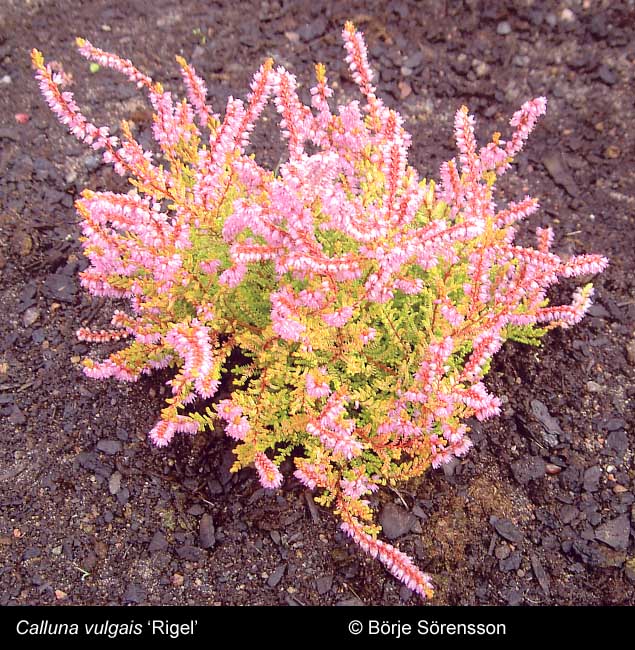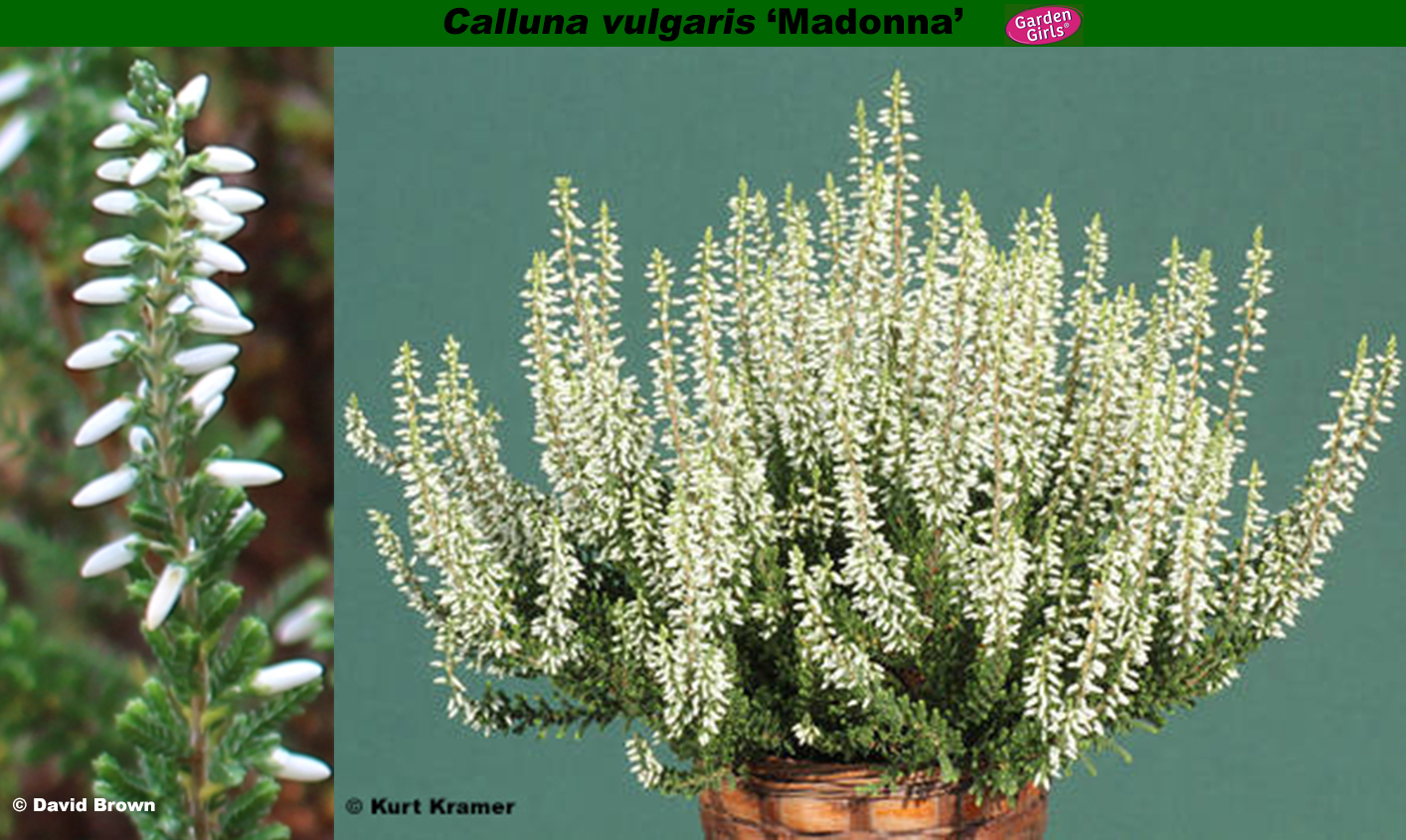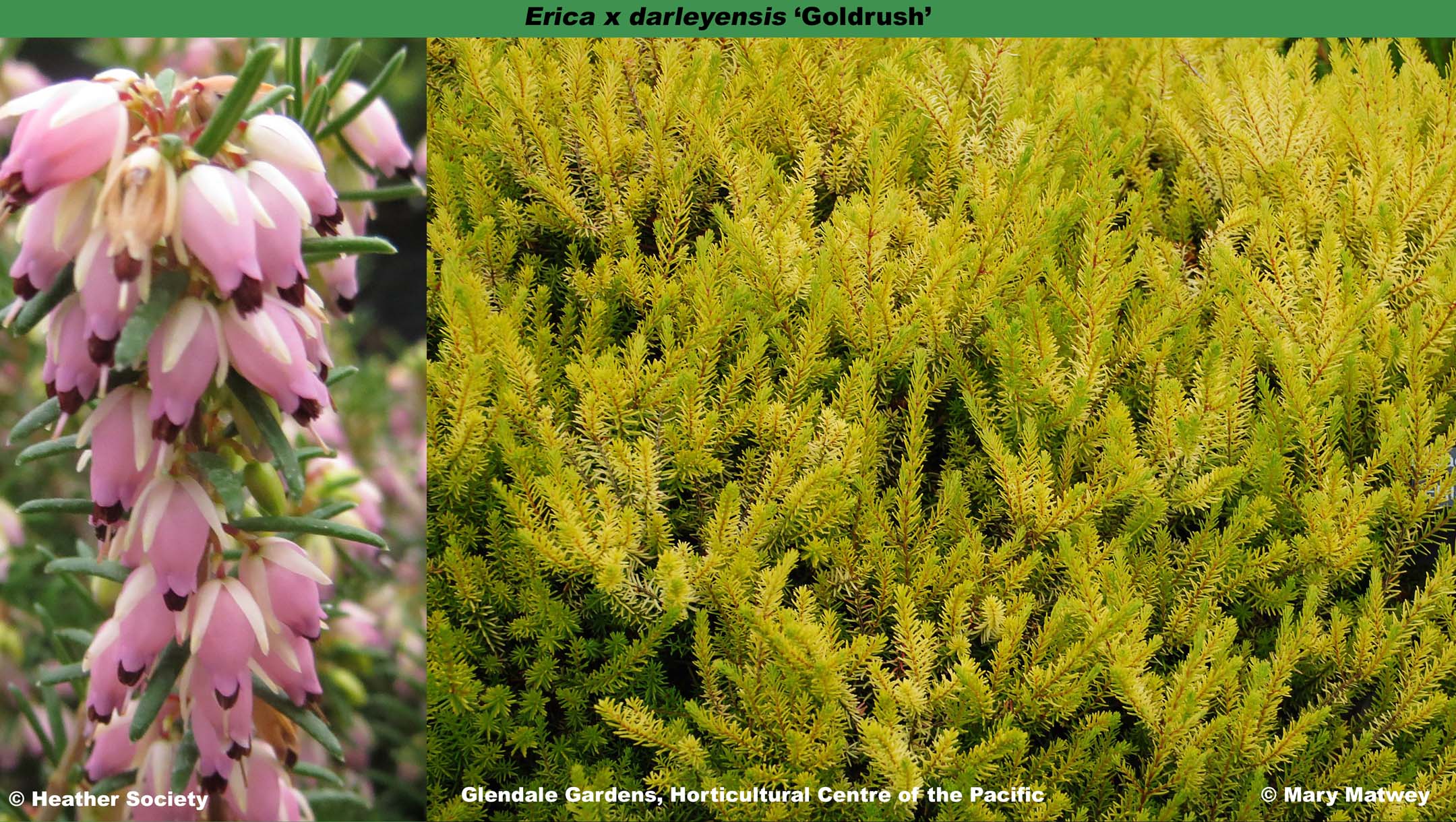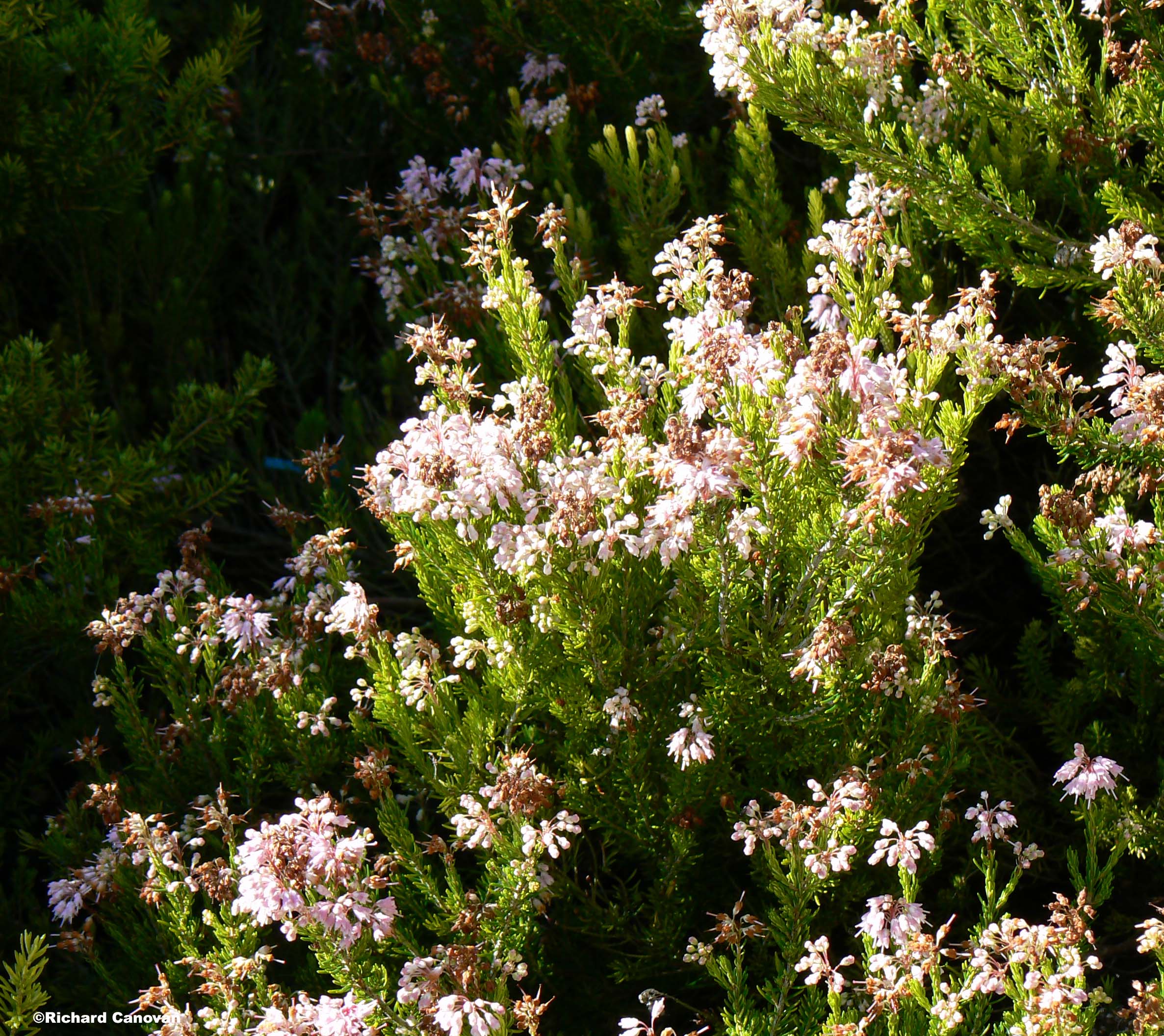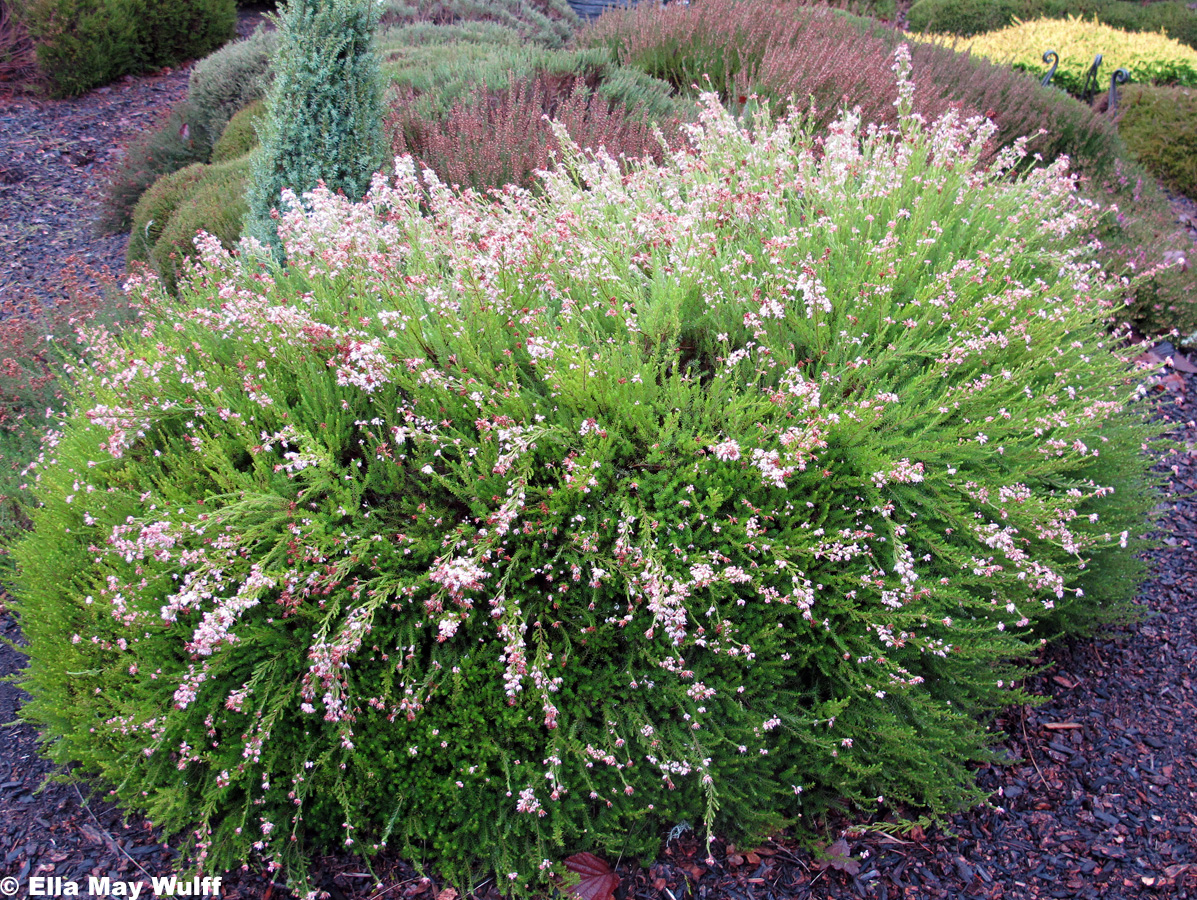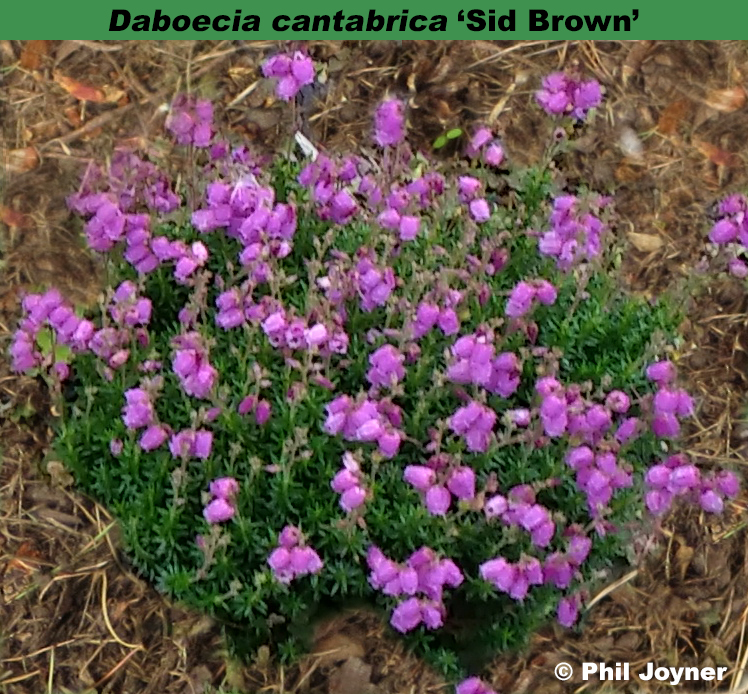Flowers pale mauve (H2), single, VIII-IX; foliage rich golden in Summer, light red in Spring; there are red tints in the foliage even in Summer; habit low, spreading, to 20cm tall, 45cm across after 5 years.
Seedling, deliberately raised in 1998 and selected by Brita Johansson.
® C.2005:03 registered on 25 August 2005 by Brita Johansson, Musselvagen 3, 468 34 Vargon, Sweden.

